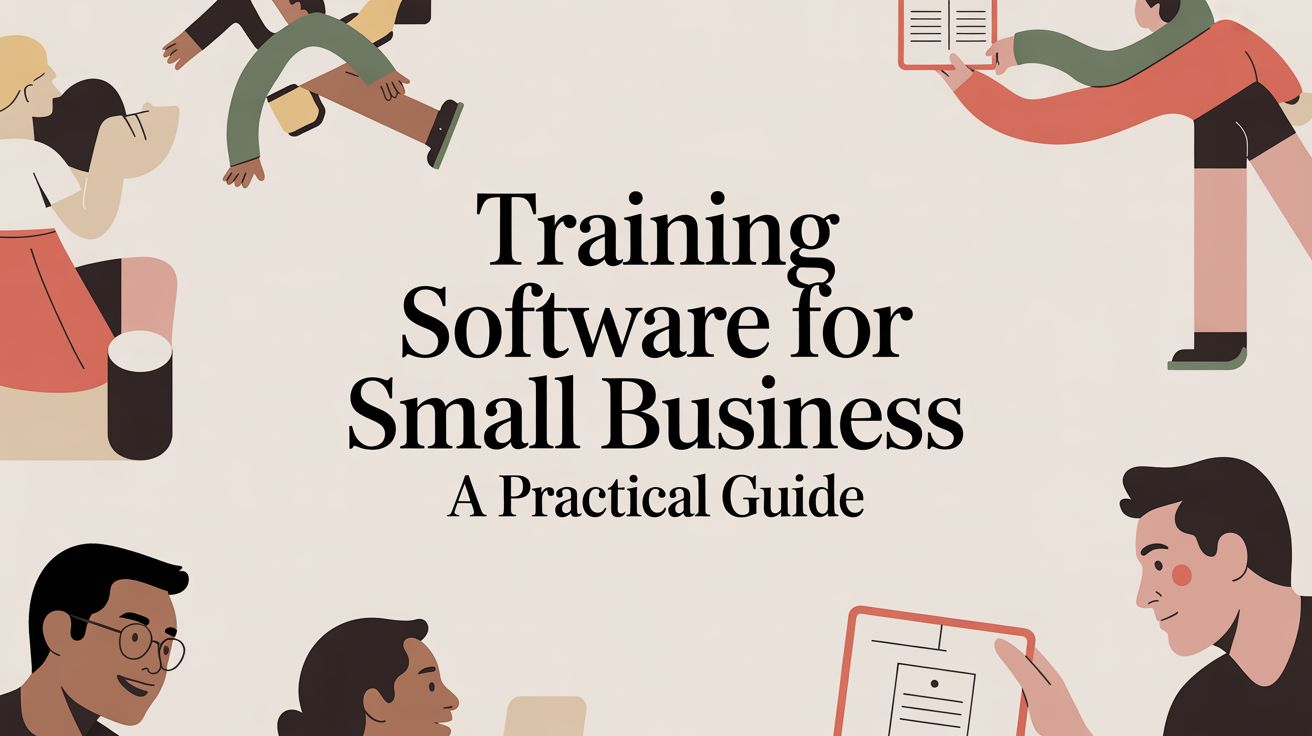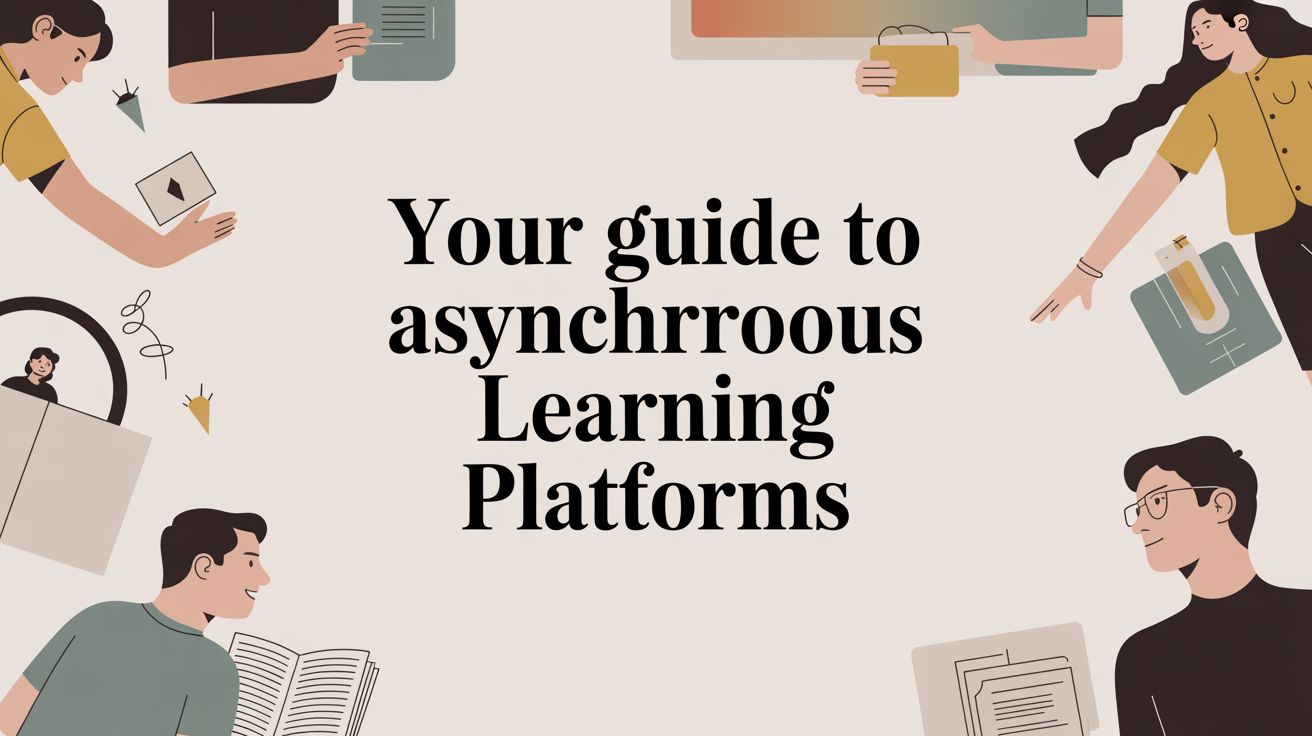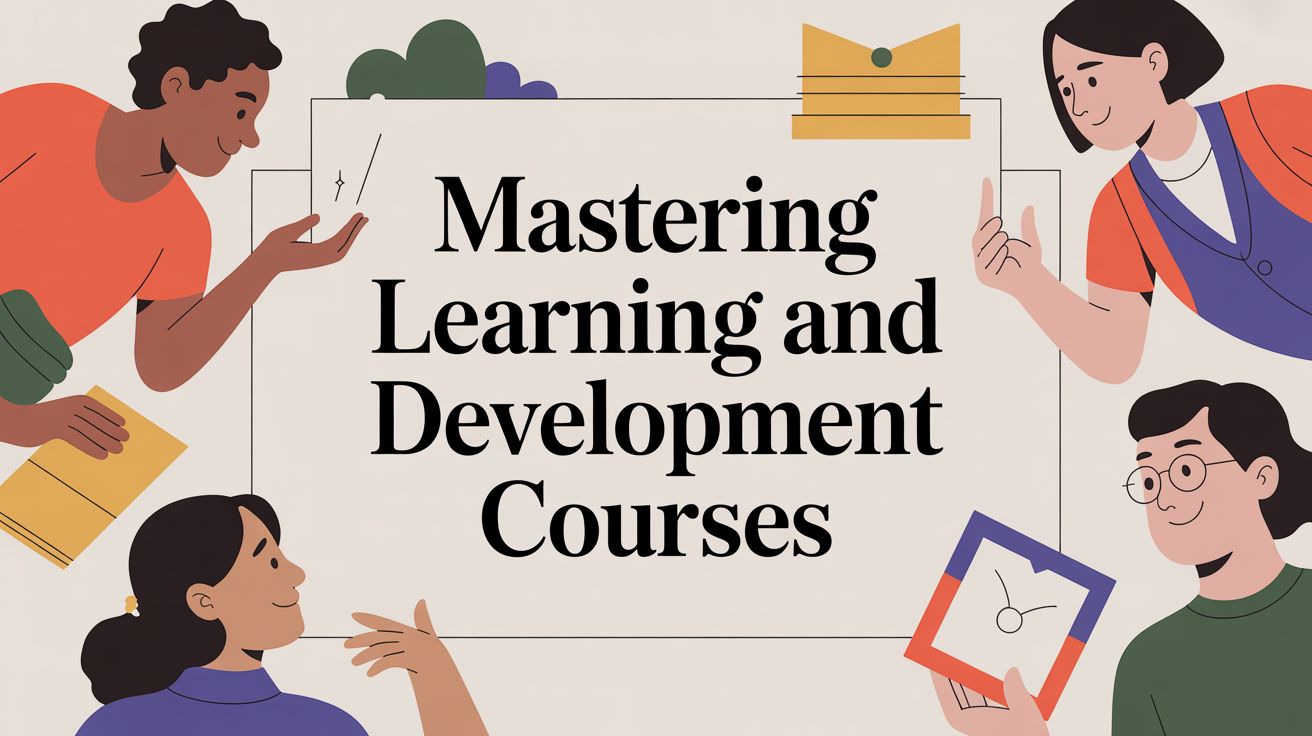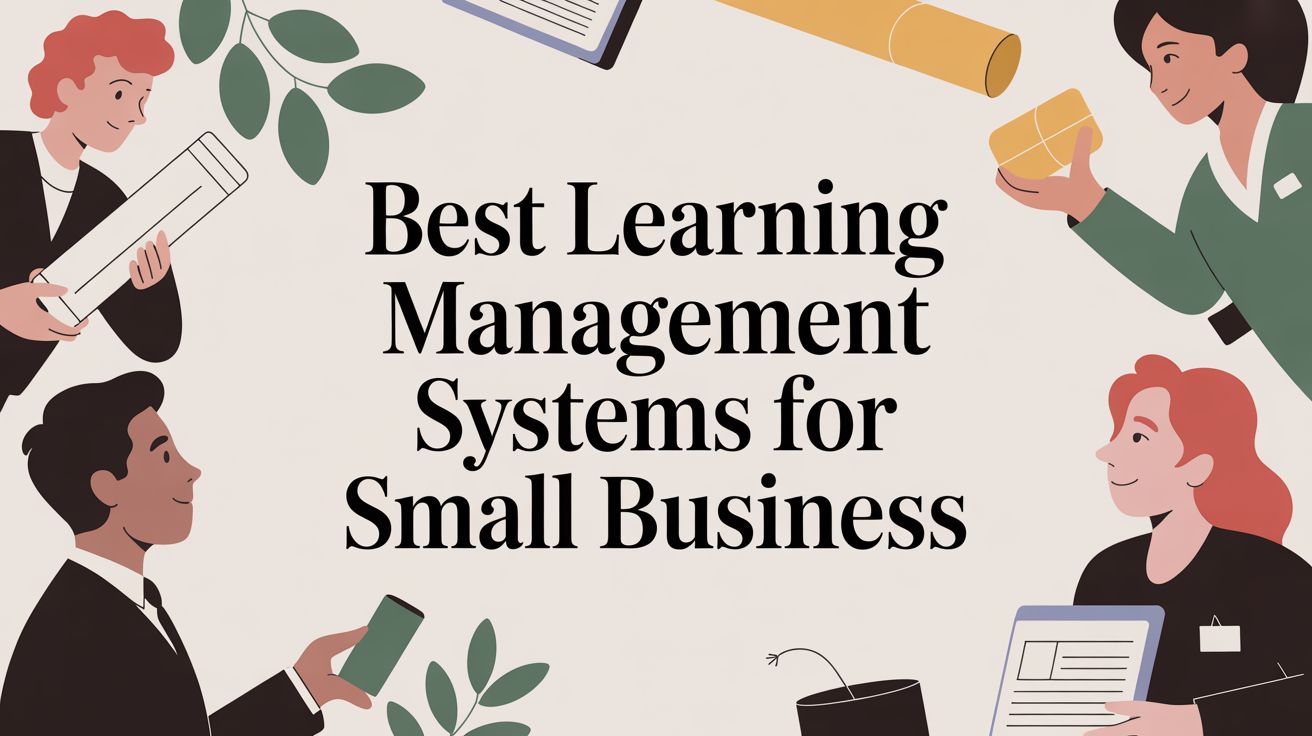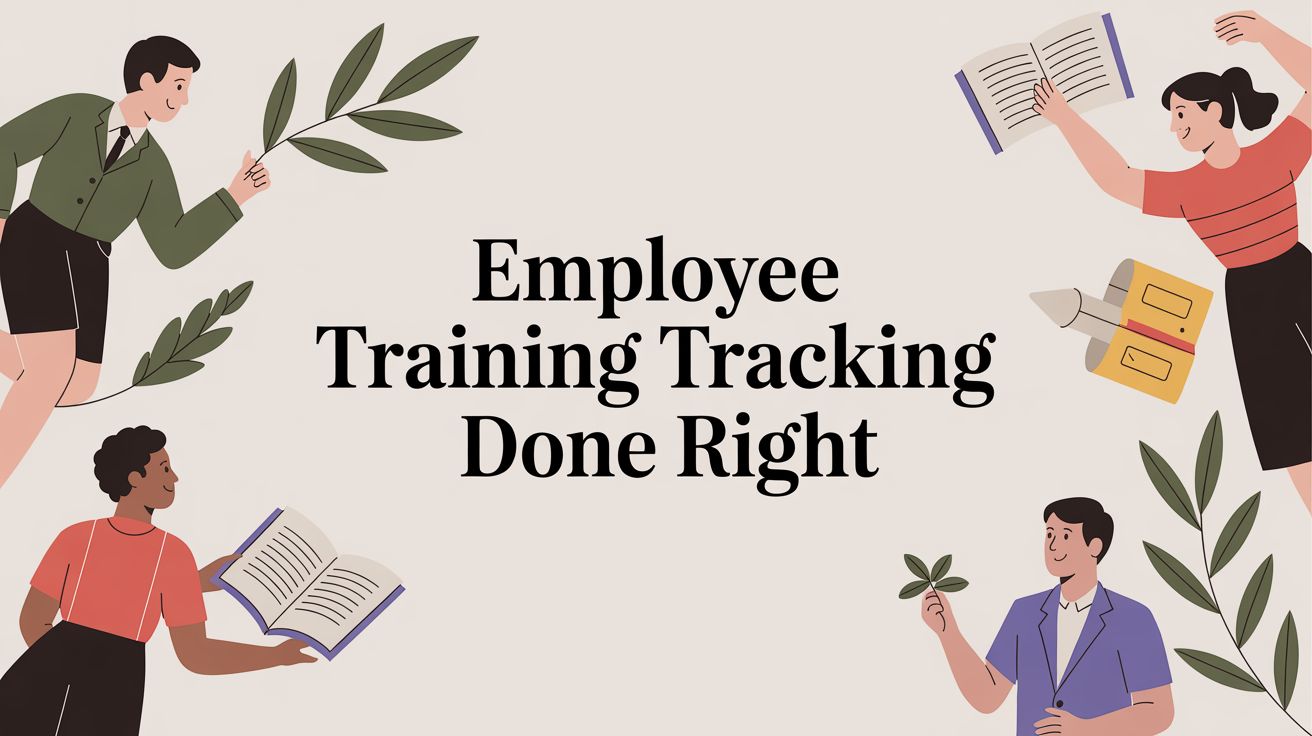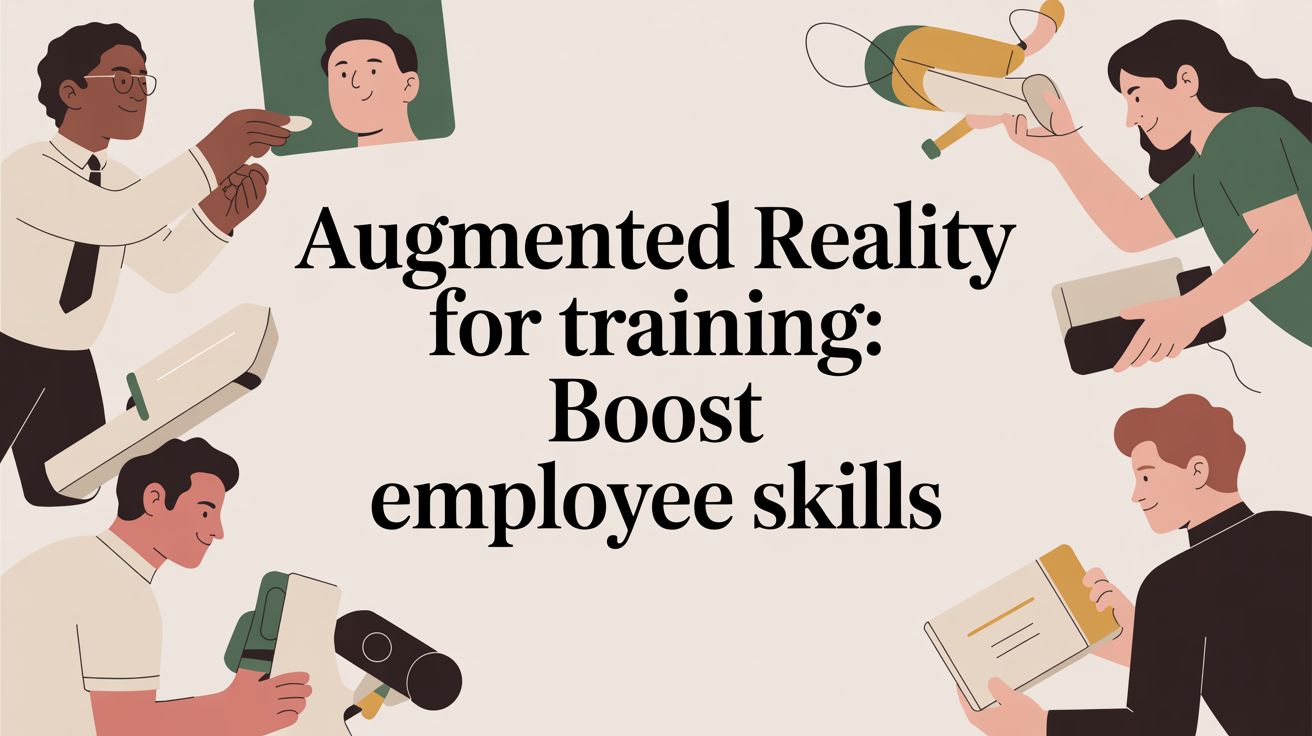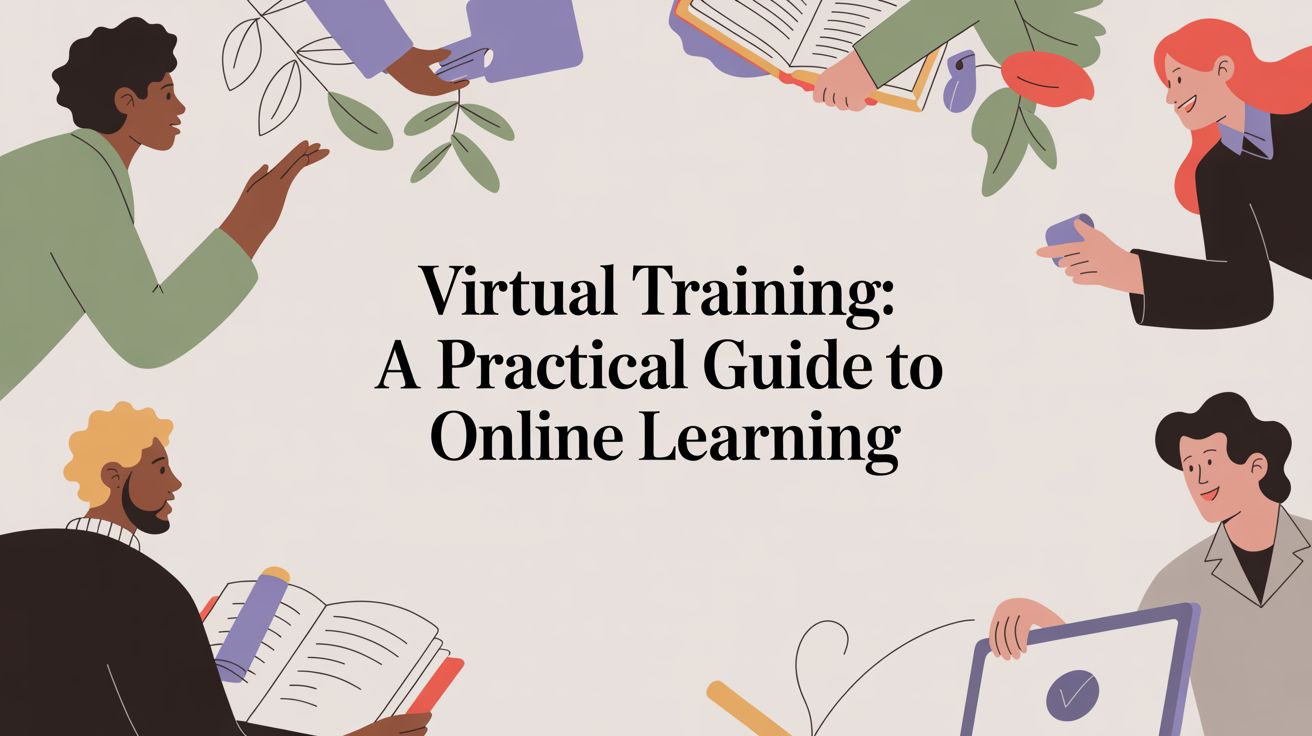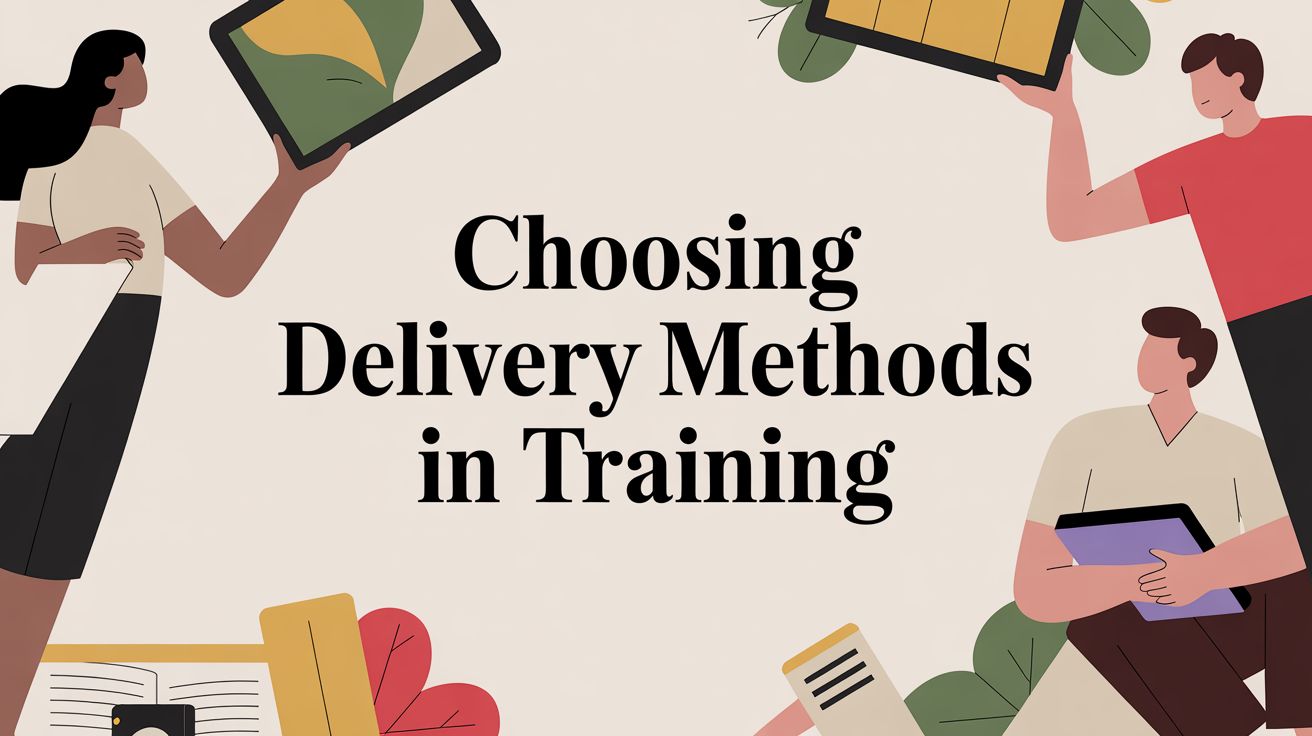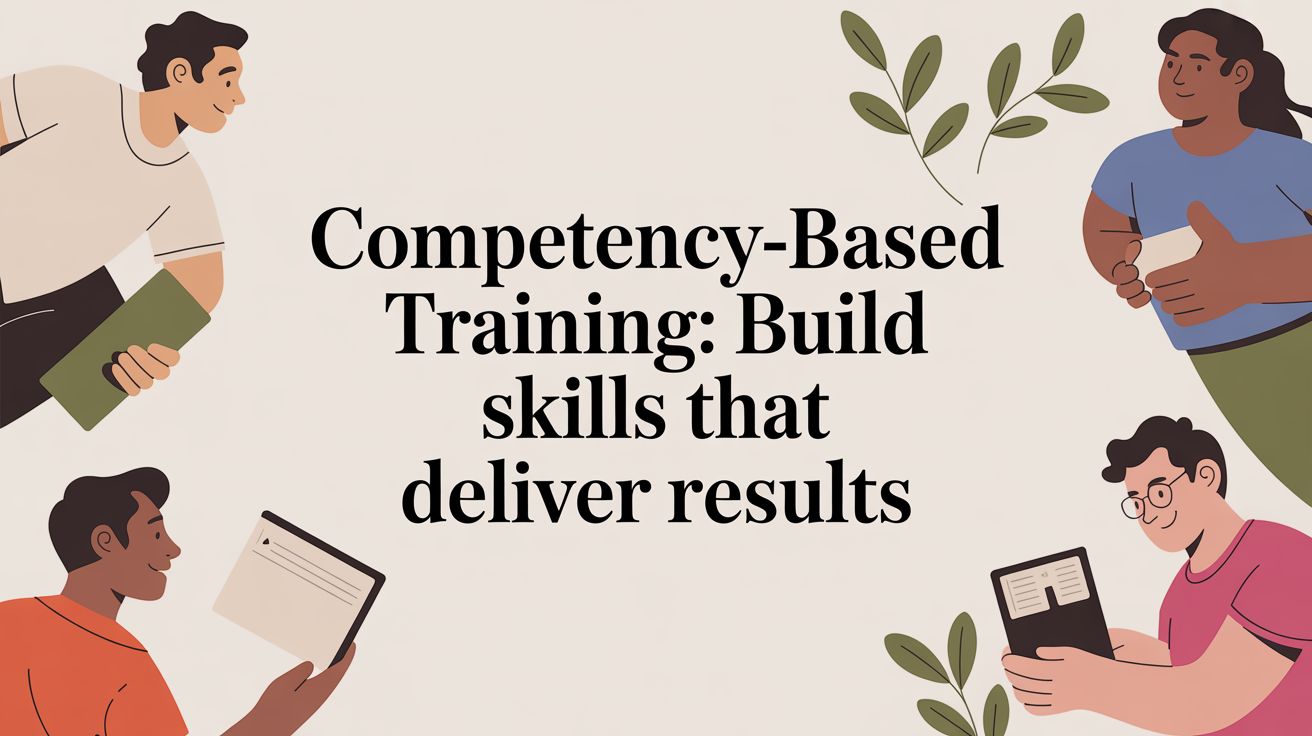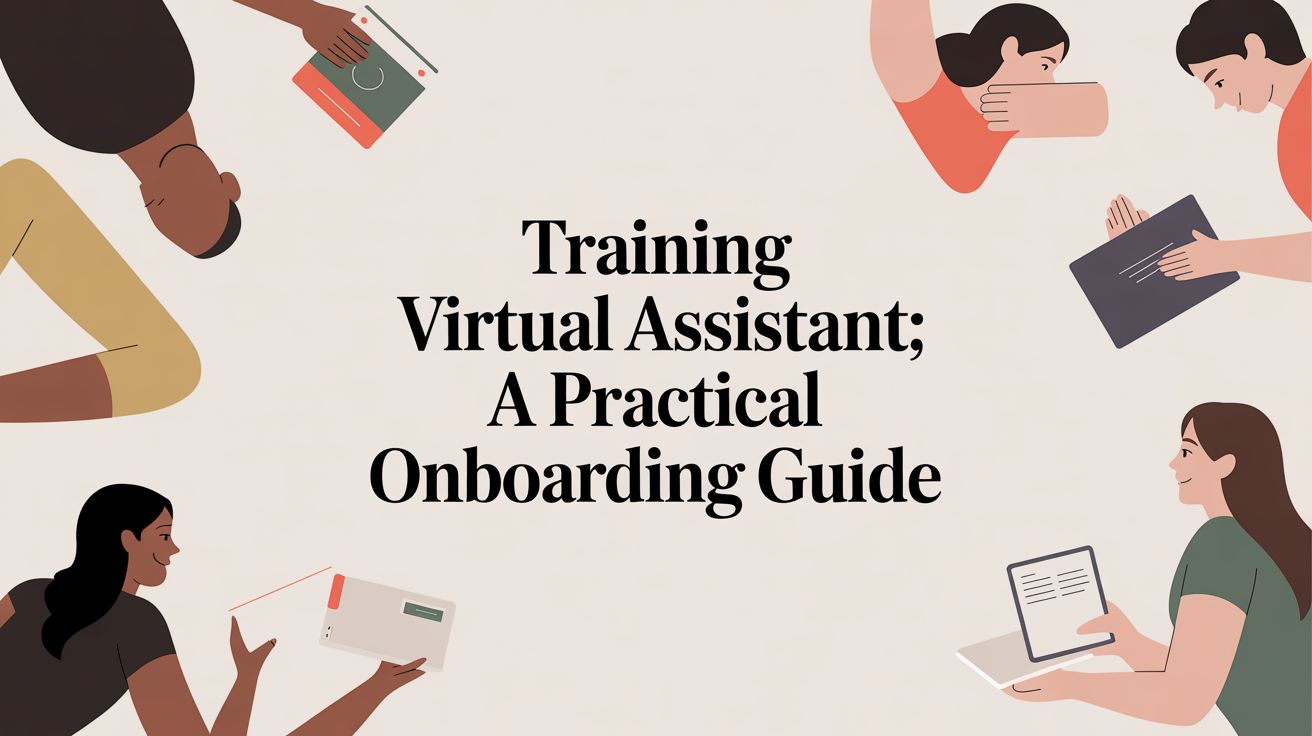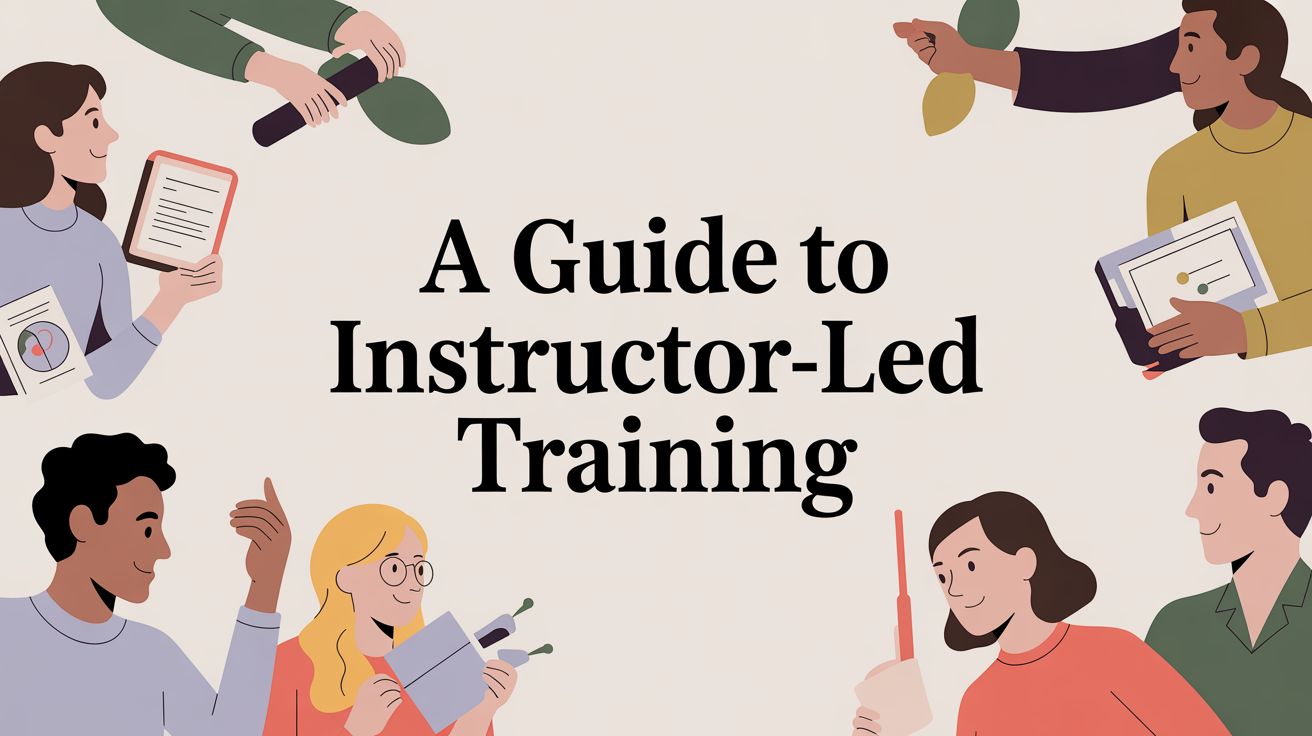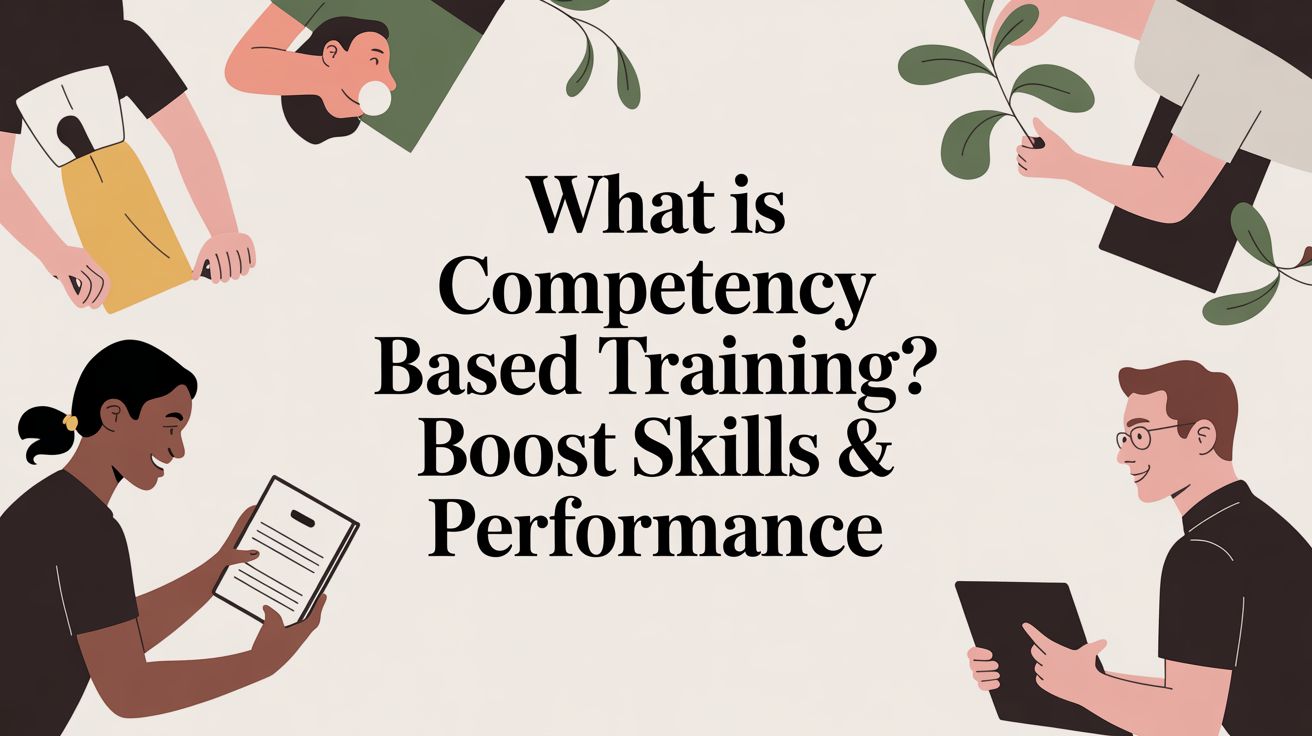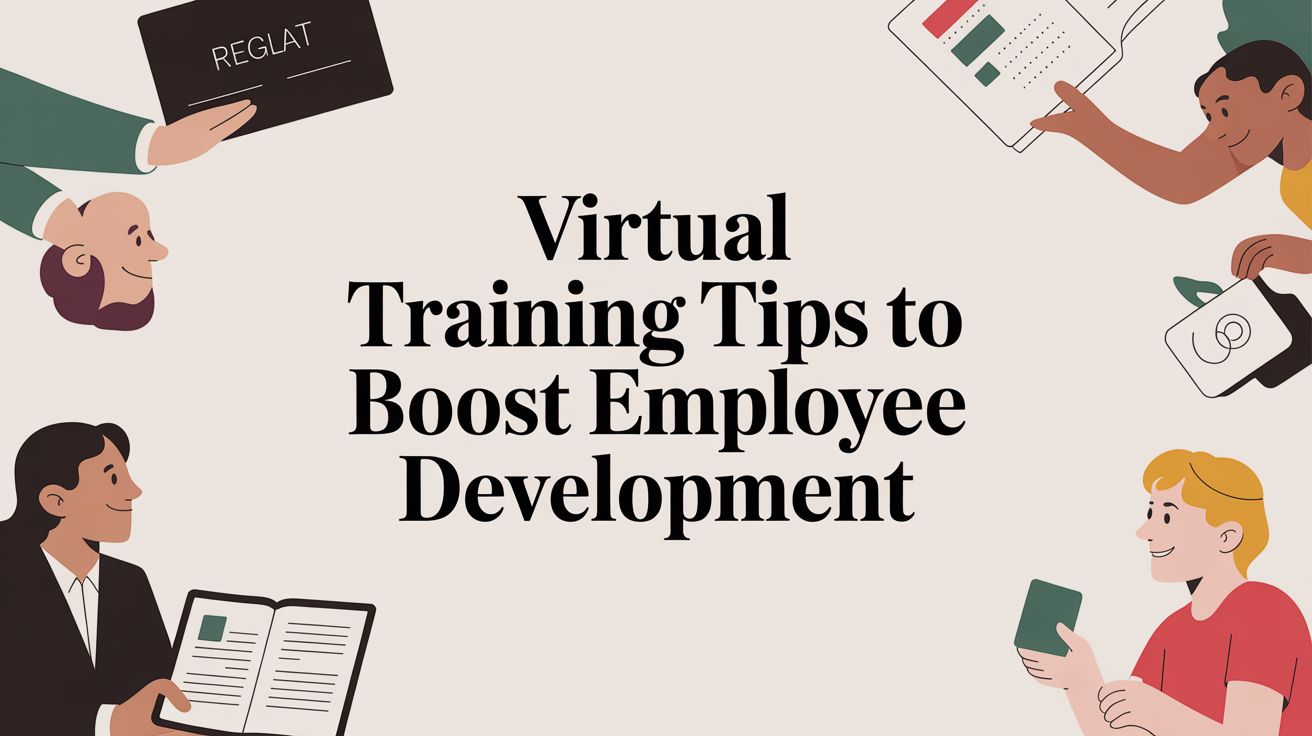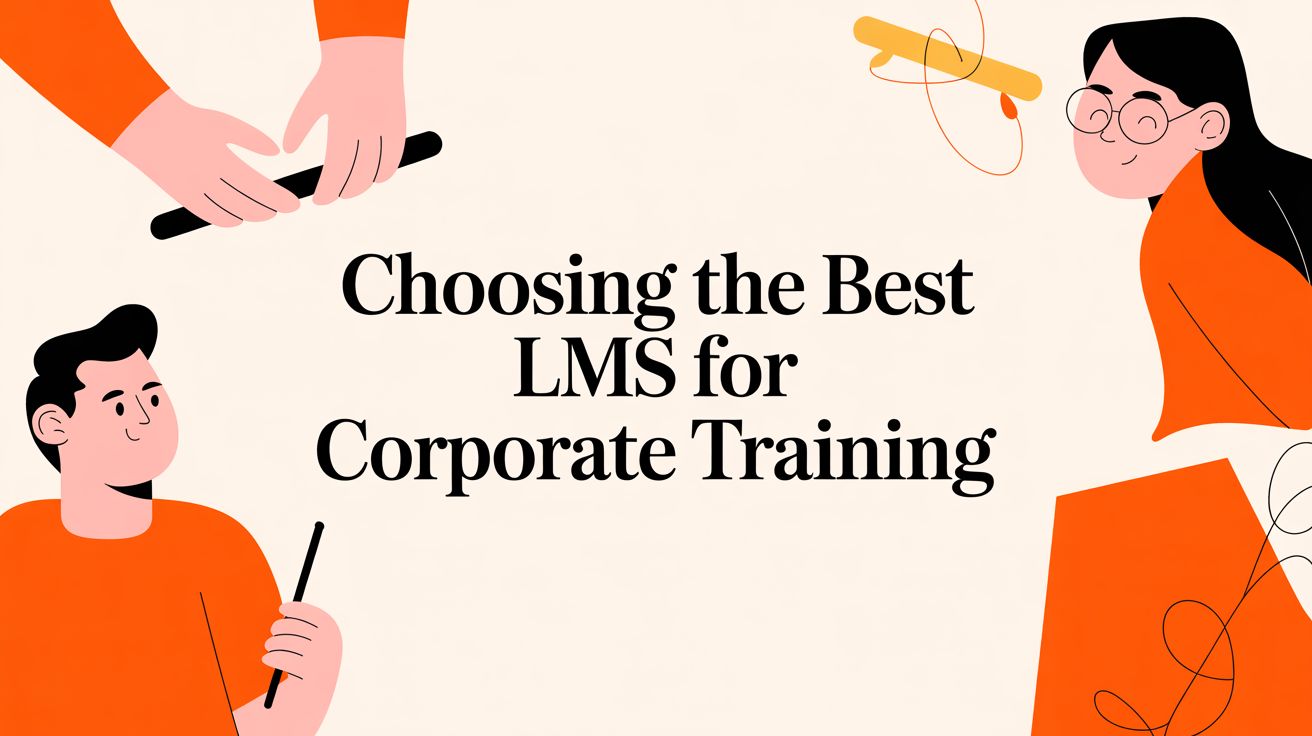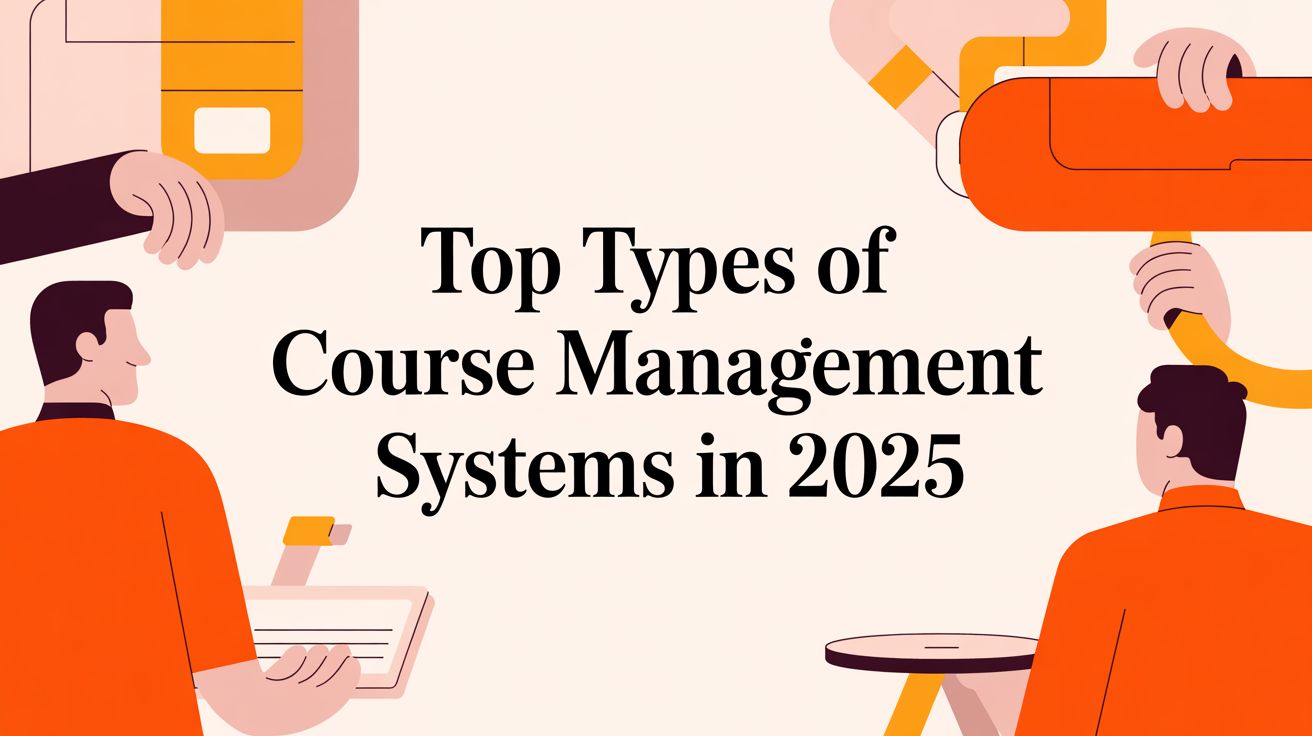10 Effective Training Delivery Techniques to Use in 2025

In today's dynamic learning environment, selecting the right training delivery techniques is a strategic necessity. The one-size-fits-all classroom model has evolved into a diverse ecosystem of methods, each with unique strengths tailored to different learning objectives and audience needs. For training managers and providers, mastering this variety is the key to moving beyond forgettable lectures and creating transformational experiences that drive real-world performance. Choosing the correct method directly impacts learner engagement, knowledge retention, and ultimately, the return on your training investment.
This guide provides a comprehensive roadmap to 10 proven training delivery techniques. We will explore the pros, cons, and practical implementation tips for each approach, from classic Instructor-Led Training (ILT) to immersive Virtual Reality (VR). You will learn how to select the optimal method for your goals, whether you're aiming to improve skill application, boost engagement, or enhance operational efficiency. Managing these diverse formats, especially for live and hybrid sessions, requires robust coordination. A dedicated training management system can streamline scheduling, resource allocation, and logistics, ensuring a seamless delivery experience for both instructors and learners. Let's dive into the methods that will help you design and deliver training that captivates your audience and achieves business objectives.
1. Instructor-Led Training (ILT)
Instructor-Led Training (ILT) is the quintessential synchronous learning method, where a qualified instructor delivers content directly to learners in a shared physical or virtual space. This time-tested approach remains one of the most effective training delivery techniques because it allows for real-time interaction, immediate feedback, and dynamic adaptation of the material to suit the audience's needs and energy level.

Popularized by universities and leading corporate training departments, ILT excels in complex, nuanced, or high-stakes subjects. Think of intensive technical bootcamps, professional certification courses like the PMP, or crucial corporate onboarding programs where fostering a sense of community is paramount. The direct human connection helps build rapport and facilitates deeper, more collaborative learning experiences.
When to Use This Technique
ILT is the ideal choice when the training involves:
- Complex or Sensitive Topics: Subjects that require in-depth discussion, clarification, and expert guidance benefit from a live instructor.
- Team-Building and Collaboration: Use ILT to foster interpersonal skills and build cohort cohesion, which is difficult to replicate asynchronously.
- Hands-On Skill Development: It's perfect for practical workshops and role-playing scenarios where learners need immediate correction and personalized feedback.
To maximize the effectiveness of your ILT sessions, integrate interactive elements like breakout groups, live polls, and Q&A segments every 15-20 minutes. This prevents passive listening and keeps learners actively engaged with the material.
Managing the logistics of ILT, from scheduling to resource allocation, can be complex. Utilizing a dedicated training management system like Coursebricks helps streamline these administrative tasks, allowing you to focus on delivering high-impact training rather than getting bogged down in operations.
2. E-Learning (Online Self-Paced)
E-Learning represents the ultimate in asynchronous, learner-centric training, delivered digitally through online platforms. This model empowers individuals to access content independently, progressing at their own pace and convenience. It leverages a rich mix of videos, interactive modules, simulations, and quizzes, making it one of the most scalable and flexible training delivery techniques available today.

Pioneered by platforms like Coursera and Khan Academy, and now a staple in corporate training via systems like SAP SuccessFactors, e-learning excels at delivering foundational knowledge and standardized information efficiently. Think of mandatory compliance training on data security, new software product tutorials, or professional development courses like the Google Career Certificates. This approach democratizes learning, ensuring consistent information delivery across a distributed workforce.
When to Use This Technique
E-learning is the perfect solution for training that requires:
- Scalability and Consistency: Use it to deliver standardized content to large, geographically dispersed audiences without logistical complexities.
- Learner Flexibility: It's ideal for foundational topics or prerequisite knowledge that employees can complete on their own schedule before a live session.
- Knowledge Reinforcement: Deploy e-learning modules for post-training reinforcement, allowing learners to revisit key concepts as needed.
To combat learner isolation and boost completion rates, design modules that are short and focused (5-10 minutes). Incorporate interactive quizzes, clear progress indicators, and ensure the content is fully mobile-responsive for on-the-go access.
3. Blended Learning
Blended Learning is a hybrid approach that strategically combines traditional instructor-led training with online, self-paced learning components. This model leverages the "best of both worlds," using technology to deliver foundational knowledge asynchronously while reserving valuable face-to-face time for interaction, collaboration, and hands-on application. This flexibility makes it one of the most effective and efficient training delivery techniques available today.
Pioneered by institutions like the Christensen Institute and adopted by global corporations such as IBM and Microsoft, blended learning optimizes both the learner experience and resource allocation. For example, a corporate onboarding program might use online modules for compliance training and company history, freeing up in-person workshops to focus entirely on team-building exercises and role-playing customer scenarios. This strategic mix enhances engagement and improves knowledge retention.
When to Use This Technique
Blended learning is the ideal choice when your training program needs to:
- Maximize Efficiency and Scalability: Use online modules to cover foundational content, allowing you to train larger audiences without increasing classroom time.
- Reinforce Complex Skills: It's perfect for programs where learners need to absorb theory at their own pace before applying it in a guided, practical setting.
- Cater to Diverse Learning Preferences: This approach accommodates learners who prefer self-study as well as those who thrive on social interaction.
For a successful blended model, ensure seamless integration between the online and in-person components. Use the pre-work from online modules as the foundation for activities in the live session to create a cohesive and continuous learning journey.
Managing the complex scheduling and logistics of a blended program requires robust tools. A training management system like Coursebricks can help you coordinate both the online and in-person elements, from tracking registrations for live sessions to managing resources, ensuring a smooth delivery for administrators and a frictionless experience for learners.
4. Microlearning
Microlearning is a powerful asynchronous training method that delivers content in small, highly-focused, and easily digestible modules. This approach breaks down complex topics into bite-sized chunks, typically lasting 2-5 minutes, each addressing a single learning objective. As one of the most agile training delivery techniques, it respects the learner's time and attention span, making it perfect for busy professionals and mobile-first learning environments.
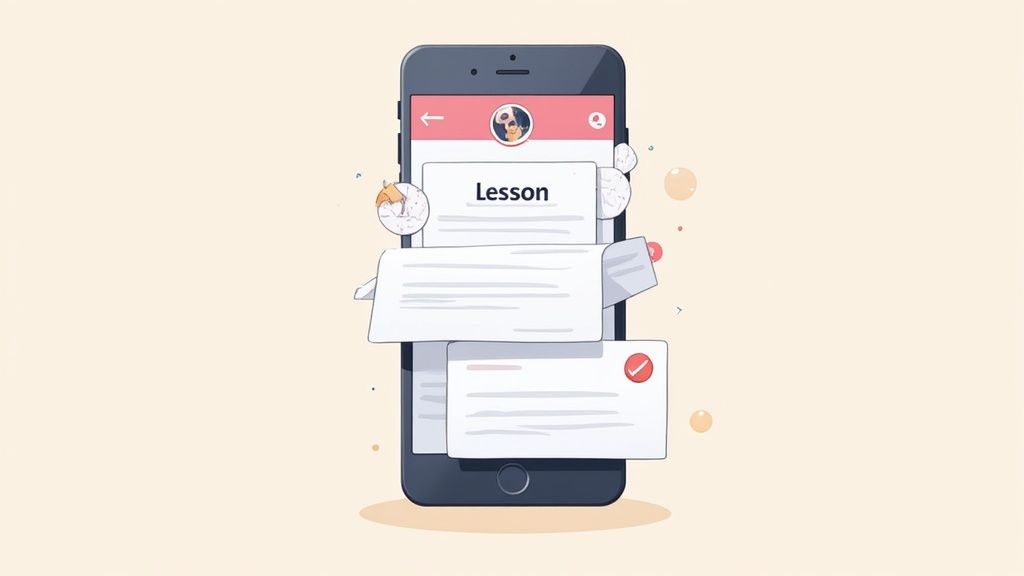
Popularized by platforms like Duolingo for language learning and Salesforce Trailhead for professional development, microlearning is exceptionally effective for just-in-time knowledge acquisition. Think of a sales representative quickly watching a video on a new product feature right before a client meeting or a technician accessing a short safety protocol module on their phone. This immediate applicability reinforces learning and improves on-the-job performance.
When to Use This Technique
Microlearning is the ideal choice for training that requires:
- Performance Support: Use it to provide quick answers and refreshers that employees can access at the moment of need.
- Reinforcement of Core Concepts: It's perfect for reinforcing key takeaways from longer training sessions, leveraging principles like spaced repetition to boost retention.
- Skills-Based Updates: Deliver targeted updates on new software, processes, or product features without pulling staff away for lengthy courses.
To maximize microlearning's impact, ensure each module is laser-focused on one specific skill or piece of information. Keep videos under five minutes, use engaging visuals, and always make the content mobile-optimized for easy access anywhere, anytime.
While microlearning is often self-paced, managing a library of modules and tracking completion can be a challenge. Integrating these assets into a broader training strategy, supported by a robust training management system like Coursebricks, ensures that both your micro and macro learning initiatives are scheduled, tracked, and measured effectively within a cohesive program.
5. Virtual Instructor-Led Training (VILT)
Virtual Instructor-Led Training (VILT) bridges the gap between traditional classroom learning and modern remote work, offering a synchronous experience where an instructor engages with learners in real-time through a digital platform. This method is one of the most adaptable training delivery techniques, blending the direct interaction of ILT with the scalability and convenience of online learning. It exploded in popularity as organizations shifted to remote and hybrid models.
Popularized by platforms like Zoom and Microsoft Teams, VILT is now a staple for corporate training departments worldwide. It excels for delivering global company town halls, software implementation workshops, and professional development certifications where learners are geographically dispersed. The key is its ability to replicate the collaborative and immediate nature of in-person training without the associated travel costs and logistical hurdles.
When to Use This Technique
VILT is the optimal choice when your training requires:
- Geographically Dispersed Teams: Use it to deliver consistent, high-quality training to employees, partners, or customers located anywhere in the world.
- Interactive Digital Skills: It's perfect for software tutorials, system walkthroughs, and any topic where learners follow along on their own computers.
- Cost-Effective Scalability: VILT allows you to train large groups simultaneously without the expense of venue hire, travel, and physical materials.
Keep VILT sessions shorter than their in-person counterparts, ideally 60-90 minutes, to combat screen fatigue. Use interactive tools like polls, breakout rooms, and the chat function every 10-15 minutes to maintain high engagement levels.
Managing the complex scheduling and communication required for VILT can be challenging. A specialized training management system like Coursebricks automates registrations, sends reminders, and organizes session resources, making it easier to deliver seamless virtual training. You can explore a deeper dive into optimizing your VILT strategy to further enhance your program's effectiveness.
6. Hands-On/Experiential Learning
Hands-On or Experiential Learning is a dynamic training method centered on the principle of "learning by doing." This approach immerses learners in practical activities, allowing them to apply theoretical knowledge in a controlled, real-world setting. As one of the most effective training delivery techniques for skill acquisition, it moves beyond passive listening and engages learners in a cycle of action, reflection, and adaptation.
Pioneered by educational theorists like John Dewey and David Kolb, experiential learning is the foundation of many high-stakes training programs. Think of flight simulators for pilots, mock surgical procedures for medical students, or interactive coding sandboxes for software developers. The core idea is to create a safe space where mistakes become valuable learning opportunities rather than critical failures, solidifying knowledge and building confidence.
When to Use This Technique
This highly interactive technique is most effective when the training goals include:
- Practical Skill Mastery: Ideal for roles requiring proficiency with specific tools, equipment, or procedures, from manufacturing to culinary arts.
- Behavioral Change: Use it for leadership development, sales training, and emergency response drills where learners must practice new behaviors.
- Complex Problem-Solving: Perfect for scenarios that require critical thinking and decision-making under pressure, allowing learners to test different strategies.
Structure your experiential activities with a clear debriefing session afterward. Ask participants what happened, what they learned, and how they will apply those insights back on the job. This structured reflection is what transforms a simple activity into a profound learning experience.
Coordinating the complex logistics of hands-on workshops, from booking specialized venues and equipment to managing participant registration, requires robust organization. A dedicated training management system like Coursebricks can automate these administrative burdens, ensuring your experiential sessions run smoothly and effectively.
7. Mentoring and Coaching
Mentoring and Coaching represent a highly personalized, relationship-based learning model where an experienced individual guides a learner’s development. This approach is one of the most impactful training delivery techniques because it tailors guidance directly to an individual's specific needs, career goals, and performance gaps. While mentoring often focuses on long-term career advice and professional growth, coaching is typically more task-oriented, zeroing in on improving specific skills or achieving defined objectives.
This technique is a cornerstone of leadership development in Fortune 500 companies, professional services firms, and specialized fields like medicine and law. For example, executive coaching helps senior leaders navigate complex challenges, while apprenticeship models in skilled trades rely on direct mentorship to transfer generational knowledge. The power lies in its targeted, just-in-time support system that accelerates skill acquisition and fosters deep professional loyalty.
When to Use This Technique
This personalized approach is most effective for:
- Leadership Development: Use it to groom high-potential employees for future leadership roles, providing nuanced guidance that a general course cannot offer.
- Specific Skill Mastery: It is ideal for closing critical skill gaps where targeted, one-on-one feedback and practice are required for improvement.
- Career Pathing and Retention: Implement mentoring to support employee career growth, increase engagement, and reduce turnover by showing a clear investment in their future.
Structure your mentoring and coaching programs with clear goals, defined timelines, and measurable outcomes. Provide both mentors and mentees with a framework for their conversations to ensure sessions are productive and aligned with organizational objectives.
While highly personal, these programs require significant administrative oversight. A robust training management system like Coursebricks can help manage the logistics, from matching participants and scheduling sessions to tracking progress against development goals, ensuring the program runs smoothly and delivers measurable results.
8. Gamification
Gamification is the strategic application of game-design elements like points, badges, and leaderboards to non-game contexts, such as corporate training. As one of the most engaging training delivery techniques, it leverages intrinsic human desires for competition, achievement, and recognition to make learning more interactive and motivating. It transforms standard training modules into compelling experiences that learners actively want to complete.
Popularized by platforms like Duolingo for language learning and Salesforce’s Trailhead for professional development, gamification excels at driving consistent participation and skill retention. The core principle is simple: by framing learning objectives as challenges and rewarding progress, you create a positive feedback loop that boosts engagement and makes the absorption of new information feel less like a chore and more like a rewarding pursuit.
When to Use This Technique
Gamification is an excellent choice when you need to:
- Boost Learner Motivation: Use it for mandatory or repetitive training, such as compliance or safety procedures, to increase participation and completion rates.
- Encourage Skill Practice: It's ideal for sales training or software adoption where continuous practice and friendly competition can drive performance.
- Track and Reward Progress: Implement gamification to make progress visible and celebrate milestones in long-term development programs.
To make gamification truly effective, align the game mechanics directly with your learning objectives. Ensure that points and rewards are tied to meaningful actions and demonstrated knowledge, not just participation. Balance competition with collaborative challenges to foster teamwork.
9. Social Learning
Social Learning is a powerful training approach that leverages peer-to-peer interaction, collaboration, and knowledge sharing to drive learning. This technique is grounded in the understanding that people learn effectively from observing, imitating, and discussing concepts with one another. As one of the most organic training delivery techniques, it transforms learning from a solitary activity into a dynamic, community-driven experience.
Popularized by platforms like LinkedIn Learning and Slack and underpinned by the work of theorists like Albert Bandura, social learning thrives in collaborative environments. It includes everything from dedicated internal forums and team-specific Slack channels to formal communities of practice and peer mentoring circles. The core idea is to create a space where knowledge is co-created and shared freely, fostering a continuous learning culture.
When to Use This Technique
Social learning is the ideal choice when your training goals involve:
- Building a Learning Culture: Use it to encourage ongoing knowledge sharing and break down information silos within your organization.
- Reinforcing Formal Training: It’s perfect for extending the life of a workshop or course by creating a space for follow-up questions and shared application experiences.
- Solving Complex, Unstructured Problems: When there isn't one right answer, social learning allows teams to crowdsource solutions and best practices.
To foster genuine engagement, establish clear community guidelines and actively model the desired behaviors. Ask thought-provoking questions, recognize valuable contributions, and create a psychologically safe environment where learners feel comfortable sharing both successes and failures.
While social learning often happens organically, it benefits from structured support. Integrating social elements into your formal training programs requires careful planning, which can be managed efficiently using a training management system like Coursebricks to schedule collaborative sessions and track participation alongside more traditional training events.
10. Simulation and Virtual Reality Training
Simulation and Virtual Reality (VR) Training represents a cutting-edge approach among training delivery techniques, immersing learners in realistic, computer-generated environments. This method allows participants to practice complex tasks and develop skills in a safe, controlled setting where mistakes are valuable learning opportunities, not costly liabilities. It bridges the gap between theoretical knowledge and practical application without real-world risk.
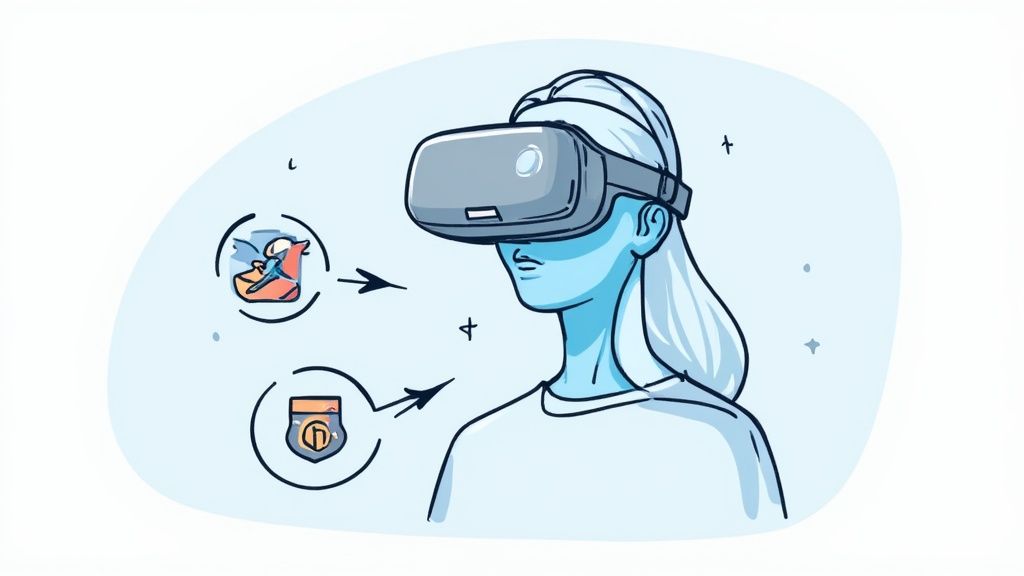
Popularized by high-stakes industries like aviation, military, and healthcare, this technique is now gaining traction in corporate training. Walmart, for example, uses VR to train employees on everything from new technology to customer service scenarios. This method excels at building muscle memory and critical decision-making skills in a highly engaging format. When considering immersive experiences, you might look into options such as Virtual Reality Pod hire for events, which demonstrates practical applications of VR technology.
When to Use This Technique
Simulation and VR are most effective for training that involves:
- High-Risk or Hazardous Environments: Ideal for safety procedures, emergency response drills, and operating heavy machinery where real-world practice is dangerous.
- Complex Procedural Skills: Perfect for surgical training, flight simulation, or intricate equipment operation that requires precision and repetition.
- Developing Soft Skills: Use immersive role-playing to practice difficult conversations, sales negotiations, or leadership scenarios in a repeatable environment. Explore how related technologies can enhance learning by reading about the uses of augmented reality in training.
Ensure a successful simulation by starting with clearly defined learning objectives. After each session, conduct a structured debriefing to help learners reflect on their performance, connect their actions to outcomes, and solidify their understanding.
Top 10 Training Delivery Techniques Comparison
| Training Method | Implementation complexity | Resource requirements | Expected outcomes | Ideal use cases | Key advantages |
|---|---|---|---|---|---|
| Instructor-Led Training (ILT) | Low tech; moderate-to-high logistical coordination | Qualified instructor, classroom space, materials | High engagement; effective for complex/sensitive topics | Onboarding, certifications, technical workshops | Real-time feedback; personalized pacing; peer learning |
| E‑Learning (Online Self‑Paced) | Medium design effort; low delivery overhead | LMS, multimedia content, minimal live staff | Scalable knowledge delivery; variable completion rates | Compliance, software training, broad professional development | Flexible access; low incremental cost; easy updates |
| Blended Learning | High — coordinates online and in-person parts | LMS + instructors + scheduling and integration tools | Balanced engagement and scalability; improved retention | Hybrid university courses, onboarding with workshops | Leverages strengths of ILT and e‑learning; flexible delivery |
| Microlearning | Medium — requires careful chunking and sequencing | Short multimedia assets, mobile delivery, LMS support | High completion and retention for focused objectives | Just‑in‑time training, refreshers, mobile learners | Fits busy schedules; quick updates; high engagement |
| Virtual Instructor‑Led Training (VILT) | Medium — needs virtual facilitation skills | Web conferencing platform, trained instructor, reliable internet | Live engagement with geographic reach; some fatigue risk | Remote workshops, global training, live certifications | Real‑time interaction without travel; sessions can be recorded |
| Hands‑On / Experiential Learning | High — scenario design and safety planning | Simulators/equipment, skilled facilitators, dedicated space | Strong skill acquisition and behavior change | Medical, aviation, manufacturing, emergency drills | Real practice; immediate feedback; memorable learning |
| Mentoring & Coaching | Medium — program design and matching required | Experienced mentors/coaches, time commitments | Personalized growth; accelerated skill development | Executive development, apprenticeships, residencies | Highly personalized; career-focused; strong relationships |
| Gamification | High — game design and content integration | Designers, platform features, analytics and rewards systems | Increased engagement and completion if well designed | Language learning, sales training, engagement programs | Boosts motivation; measurable progress; enjoyable experience |
| Social Learning | Medium — community setup and moderation needed | Collaboration platforms, facilitators/moderators | Improved knowledge sharing and critical thinking | Communities of practice, peer learning, team onboarding | Leverages collective knowledge; cost‑effective; builds community |
| Simulation & Virtual Reality | Very high — technical development and fidelity required | VR hardware/simulators, developers, technical support | Safe practice for high‑risk tasks; accelerated skills | Pilot/surgical simulation, emergency response, heavy equipment | Immersive, repeatable, safe high‑fidelity practice |
Bringing It All Together: Orchestrating Your Training Delivery Strategy
The journey through the diverse landscape of training delivery techniques reveals a powerful truth: there is no single "best" method. From the immersive engagement of traditional Instructor-Led Training (ILT) and hands-on experiential learning to the scalable flexibility of E-Learning and Virtual Instructor-Led Training (VILT), each technique offers a unique set of tools. The real mastery lies not in choosing one but in orchestrating a symphony of methods that align with your specific learning objectives, audience needs, and organizational goals.
The most impactful training programs are dynamic ecosystems. Imagine using microlearning modules to introduce foundational concepts before a deep-dive VILT session, followed by a hands-on simulation to apply the knowledge. This blended approach creates a comprehensive learning journey that reinforces key information at multiple touchpoints, significantly boosting retention and practical application. By strategically combining these approaches, you move beyond simple information delivery and start architecting transformative learning experiences.
Your Actionable Blueprint for Success
To translate this knowledge into action, start with a clear, strategic plan. Moving forward, focus on these critical steps:
- Conduct a Learner Needs Analysis: Before selecting your techniques, deeply understand your audience. What are their existing knowledge levels, preferred learning styles, and daily work constraints? A persona-based approach can provide invaluable insights here.
- Align Techniques with Objectives: Match the delivery method to the desired outcome. Is the goal knowledge acquisition (E-Learning, microlearning), skill development (hands-on, simulation), or behavioral change (coaching, social learning)?
- Create a Blended Learning Roadmap: Map out the entire learning journey. Identify which training delivery techniques will be used at each stage, from pre-work and core instruction to reinforcement and on-the-job support.
- Measure and Iterate: Implement feedback loops and performance metrics to evaluate the effectiveness of your chosen blend. Use this data to continuously refine and optimize your training delivery strategy for maximum impact.
Don't be afraid to pilot a new blend of techniques with a small group. This allows you to gather direct feedback and make necessary adjustments before a full-scale rollout, saving time and resources while ensuring a more effective program.
Streamlining Your Complex Training Operations
As you begin to weave together various live, virtual, and hybrid training modalities, the logistical complexity can quickly become overwhelming. Managing schedules across different time zones, tracking delegate registrations, sending automated communications, and handling invoicing for multiple sessions is a significant administrative burden.
This is precisely where a dedicated training management system (TMS) becomes a strategic asset. While a Learning Management System (LMS) is ideal for deploying asynchronous e-learning content, a TMS like Coursebricks is purpose-built to manage the operational intricacies of instructor-led training (ILT), whether it's delivered live, face-to-face, or in a hybrid format. By automating course scheduling, delegate management, and financial administration, Coursebricks liberates your team from manual tasks. This allows you to focus your energy where it matters most: on designing and delivering exceptional training that drives real business results.
Ultimately, mastering these training delivery techniques empowers you to create a more agile, effective, and engaging learning culture. By choosing the right tools and supporting them with smart technology, you can build a training function that not only educates but truly inspires performance and fuels organizational growth.
Ready to explore Coursebricks?
Manage training programs, automate emails, and generate detailed reports — all in one place.






